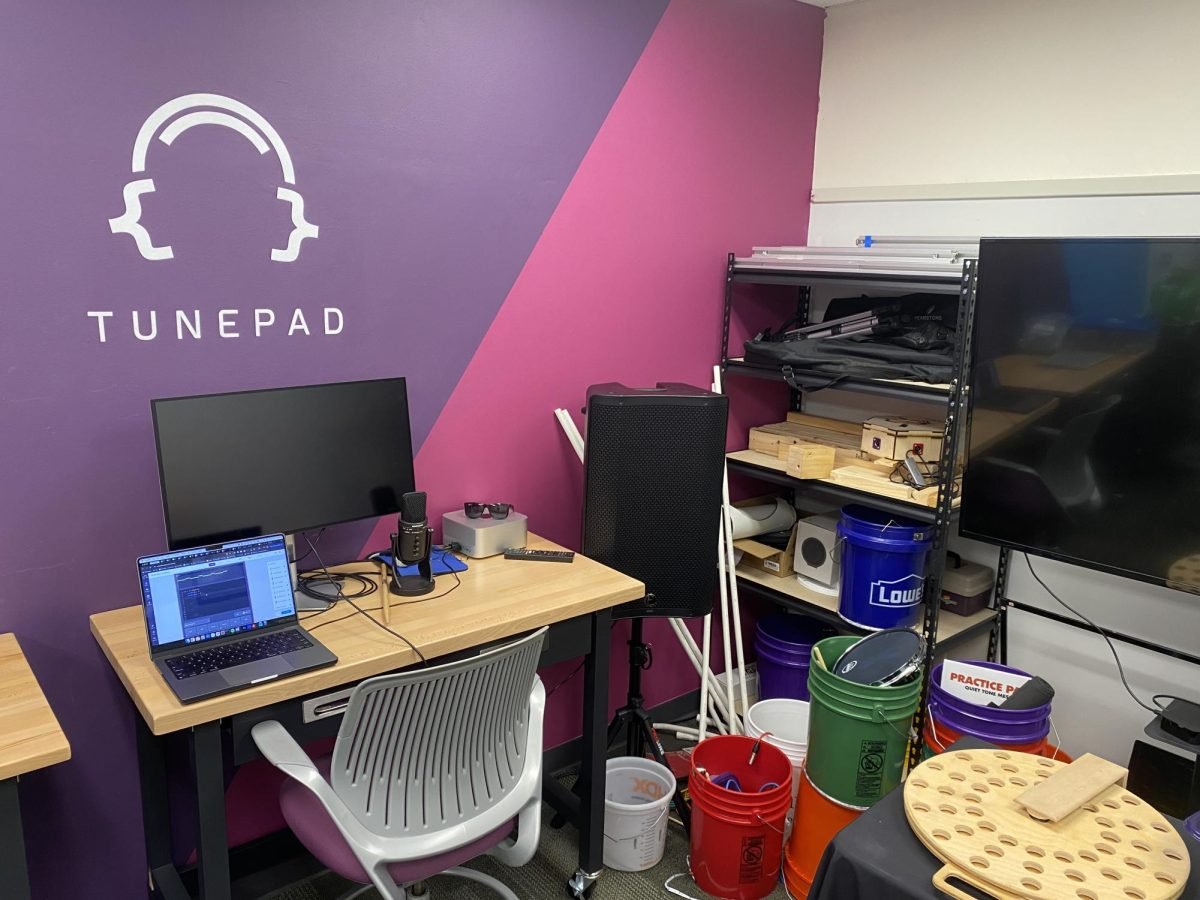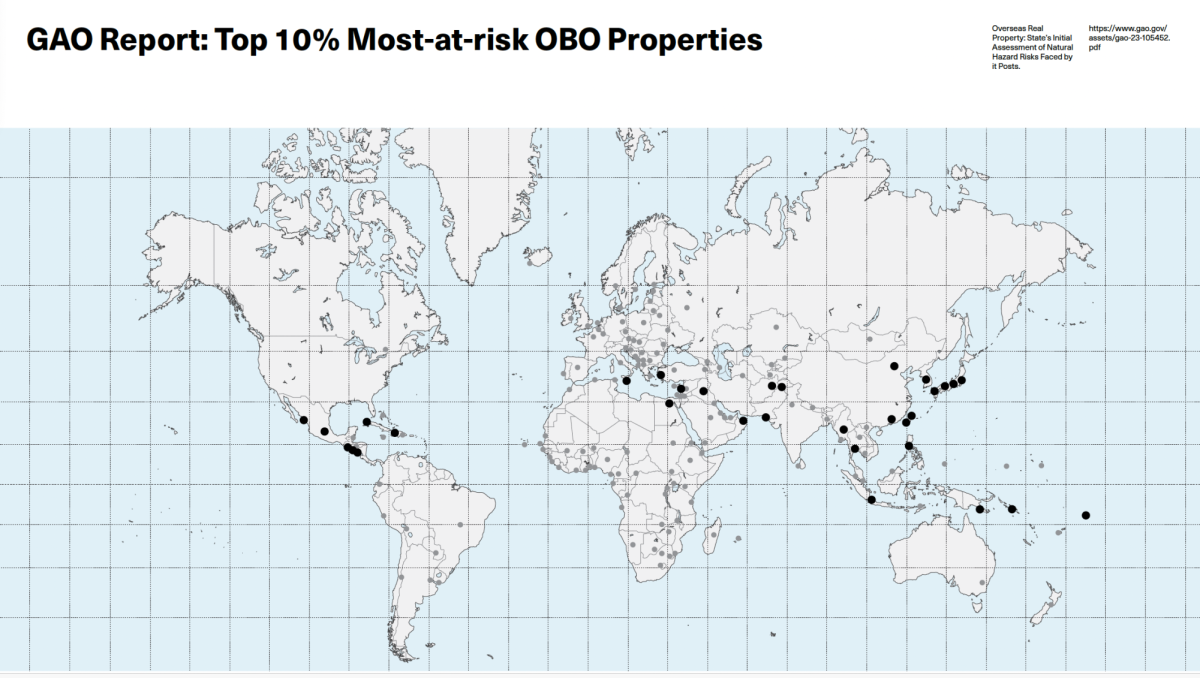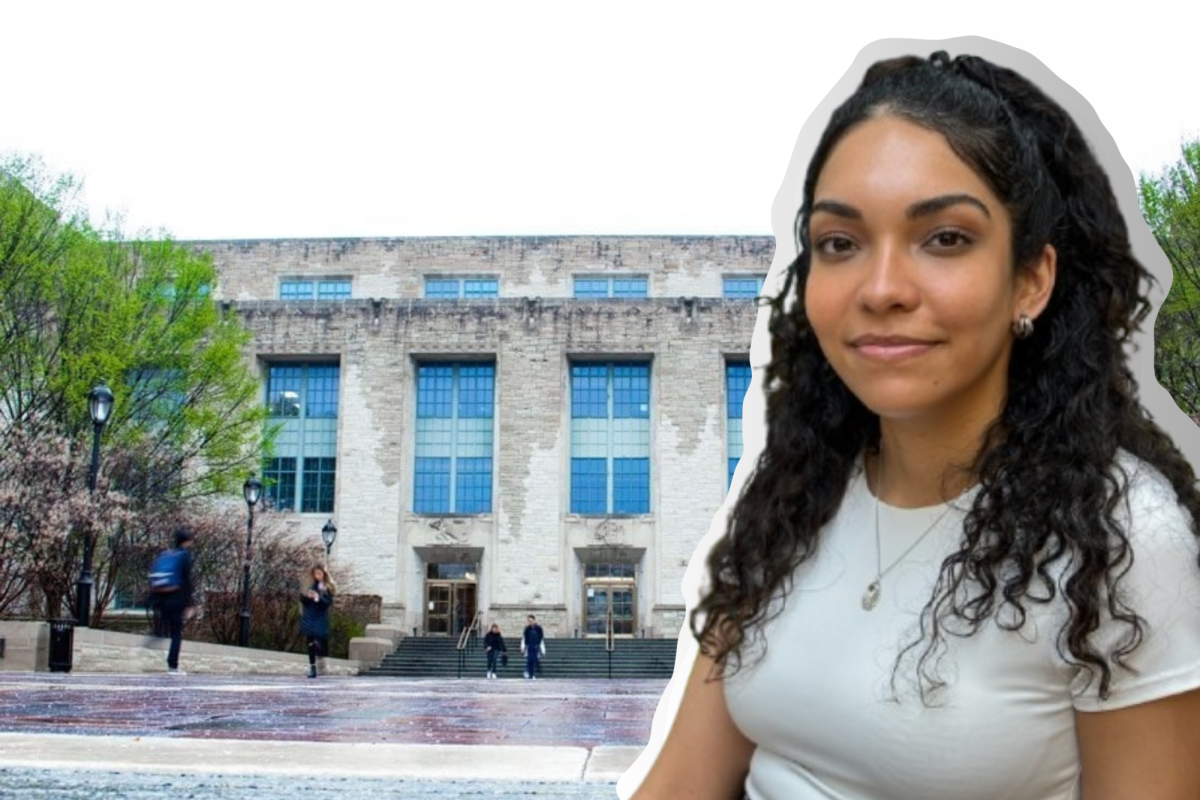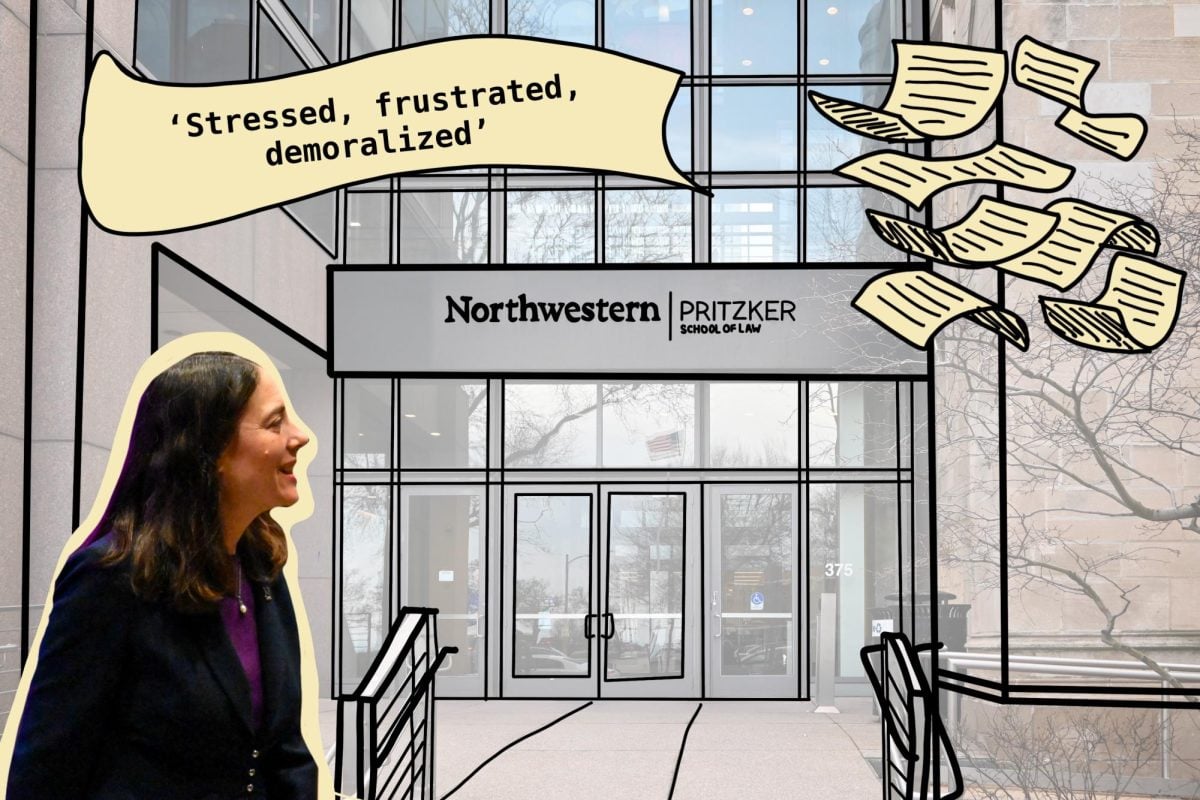SESP senior Emily Kellner had a frightening realization last fall. The social policy major was trying to plan for post-graduation, searching for jobs that fit her qualifications, when she noticed something odd.
“I just didn’t quite feel that I was ready,” she said. “When I started looking more critically at the courses I had taken and what we we’re taught in those courses, it didn’t seem to add up to the name of the major. I really didn’t feel like any of my classes had prepared me to go into a career in policy, even at an entry level, or even something tangentially related.”
All SESP students take basic social policy courses, but higher-level courses dealing with specific policy areas are harder to come by.
“Right now there are a couple courses in education policy, there’s one health policy class that’s not offered consistently and beyond that there’s really not much,” she said. “Education has been my interest, but I wondered, is that because that was the only option that I ever really had?”
Many of SESP’s 362 students view their advisers and professors as mentors. Most feel comfortable within the SESP community – the SESP office in Annenberg Hall has a big bowl of candy available at all times, and students joke about how often SESP meetings come complete with pizza and other snacks.
However, Kellner said she felt this problem was much larger than a meeting with her adviser. As a senior, she knew graduation would precede significant improvement in her course options.
Instead, she worried for future social policy students who might face the same issues.
“I really got thinking that that wasn’t okay, and I really wanted to be a part of making it better for future students,” she said.
And although she knew professors and administrators who would listen to her concerns, she realized she wasn’t sure how to actually create change.
Of Northwestern’s six main undergraduate schools, only SESP does not have a student organization devoted to working with administrators to provide feedback on the student experience.
These groups take various forms, from the nearly 90-member Weinberg Student Advisory Board to the 20-member Medill Undergraduate Student Advisory Council, one of four such groups the Medill School of Journalism, Media, Integrated Marketing Communications has for its different academic programs. Most meet twice a quarter, with smaller meetings much more frequently. Weinberg’s board officers meet as often as once a week.
A ‘SPRC’ catches
In the fall, Kellner met with her friend Jake Rosner, another SESP senior, to catch up after the summer. Rosner told her he had been speaking to their classmates and professors about some major flaws in the social policy program – including the areas Kellner felt she was lacking.
Rosner had begun organizing the Social Policy Reform Council (pronounced “spark”) over the summer. By Fall Quarter the group comprised about 15 students , a mix of frustrated seniors and the underclassmen who hoped to avoid the problems their older peers described. Fall was a wave of activity as SPRC members surveyed their peers, met with professors, researched other universities’ social policy programs and began drafting a proposal for the administration.
Throughout their discussions, SPRC members noticed a few things. The first was that they had a lot of academic ground to cover. A critical look at the social policy curriculum revealed an absence of practical policy instruction, such as knowing how to write policy briefs or interpret policy documents, Rosner said. This becomes painfully obvious to juniors on their practicum – an unpaid, off-campus internship that occupies a quarter of their school year.
Second is a structural problem: a lack of coherent student feedback built into SESP’s institution. SESP students fill out CTECs like all NU students at the end of each quarter, and, according to administrators, have a quality advising program. However, there is no organizational body within the school designed to compile student input on things like courses, curriculum or even the extracurricular community.
“The reason why we’re in this situation is because students haven’t really been listened to in the past,” Rosner said. “Having students embedded in the structure of SESP and present in making decisions … unless we do that, the current state of the program isn’t going to improve.”
A sounding board
Schools with advisory groups use them to get feedback on multiple things. McCormick’s Student Advisory Board holds “Ask an Upperclassman” sessions during registration each quarter so students can get advice from their peers about courses and professors, and the MSAB was a big part of the push to renovate the facilities at Technological Insititute. Medill’s version of the group, MUSAC, has organized a yearly Medill Student Showcase and a peer mentoring program in addition to various social activities like last year’s screening of the New York Times documentary “Page One.”
Weinberg takes a more wholesale approach to its Student Advisory Board, which includes two representatives from nearly every major and program in the school. At its quarterly general meetings, WSAB discusses ideas affecting every part of Weinberg’s student population of 4,314; it probes further into specific concerns in smaller breakout meetings, and the four executive board officers speak weekly about ongoing endeavors.
Weinberg administrators join the discussion at nearly every point, both asking questions at general meetings and working with officers to refine the WSAB’s annual year-long project, a proposed goal or change the school sets to accomplish.
According to co-President Andrew Levin, the ongoing conversation between the WSAB and Weinberg’s administration has helped the two grow closer in recent years.
“The Weinberg administration recognizes that this group of students is a very good representation of Weinberg in general and the fact that they can come to students to make these kinds
of decisions or to ask these kinds of questions,” the Weinberg senior said. “They’re using us as a good sounding board.”
Each Spring Quarter, the WSAB presents its annual project to the board of visitors, a group of powerful Weinberg donors. If approved, the ideas go into action. Because administrators are part of the process from the start, year-end proposals are usually rapidly instated.
According to Levin’s co-president, Weinberg senior Anne Song, the “simultaneous process” helps both student advisers and administrators achieve their goals sooner.
Distributing change
When Weinberg students decided in 2003 that they wanted to make 300-level courses count for distribution requirements, the movement centered on the student advisory board. Whereas many of the board’s big initiatives avoid specific academic requests, the distribution changes were widely applicable enough to merit the group’s work.
Officers met with administrators to ensure this final project would incorporate undergraduate needs from all majors but relied on suggestions from WSAB members about specific programs’ requirements.
“The deans and Professor (William) Haarlow (Weinberg director of college-admission relations) provide a very good understanding of what’s happened in the past, what’s worked, what hasn’t worked,” Levin said. “Having the deans there to say, ‘Well, look at how you can apply this to a more broad understanding of Weinberg as whole,’ I think they’re very helpful in that regard.”
The faculty voted in May 2004 to make the change official, and the following year students were allowed to earn distribution credit for 300-level classes.
‘No permanent allies, no permanent enemies’
In SPRC, students have been hesitant to ally themselves with faculty whose interests may not match their own. According to Rosner, they have chosen instead to follow the tenant, “No permanent allies, no permanent enemies,” adapted from a quote by former British prime minister Henry Temple.
Instead of relying on one faculty member for the entire proposal, SPRC enlisted trusted professors from within the close-knit SESP community to advise specific parts of their project. Some proposed borrowing ideas from other universities’ social policy programs and others helped streamline phrasing and clearly outline the students’ goals.
The result was a professor-advised, but student-devised, three-part proposal.
SPRC met Feb. 20 with representatives from SESP’s Undergraduate Committee – a group of faculty and one student that addresses various needs within SESP – to discuss their proposed changes. The meeting was “really productive,” according to Undergraduate Committee Chair Miriam Sherin, and the groups scheduled a follow-up session with the entire SESP faculty for March 9.
“The students did a great job of articulating their concerns about the social policy program and their ideas for improving the curriculum,” she said.
Administrators are eager to work with SPRC on addressing their concerns, SESP Dean Penelope Peterson wrote in an email.
“We have invited the SPRC students to our next all-School faculty meeting to discuss their proposal and to respond to questions from our faculty,” she wrote. “We look forward to a productive continued discussion with the student members of the Social Policy Reform Council.”
‘What a nightmare’
SPRC members consider a lack of dialogue between students and faculty among their biggest concerns; as consumers of their education, they say, students should be allow to mold the product. But while administrators welcome student response in various forms, Sherin said the school is careful to weigh undergraduate requests with the needs and capabilities of the college.
“We also think hard about the balance of courses that students are going to take, along with the available faculty expertise,” she said.
University President Morton Schapiro said he agrees what’s best for a school may be harder for students to visualize than for administrators. Schapiro said although he values student feedback, schools that are eager to sate students’ curricular desires risk the quality of their education.
“I would never, ever turn the curriculum over to the students,” he said. “Because schools that have (done so) don’t have language requirements, they don’t have science requirements, they don’t have any quantitative requirements. In fact, some of them don’t have grades. And I would not trust the future of the learning experience in the classroom to 18-year-olds, to tell you the truth … What a nightmare that would be.”
A similar issue is present in McCormick, where the Student Advisory Board spends only about a third of its focus on curriculum feedback, according to President Andrew Kessler. While student advisers often have ideas for improvement, the McCormick senior said the school can be hesitant to apply them to programs designed and monitored almost exclusively by faculty.
“When it comes to coursework and academics, we’re more on the idea generation than the implementation side,” he said. “There’s not really a role for us in actually going ahead and implementing changes.”
But Kellner and other SPRC members hope SESP administrators will be more open to their input.
“If they attempt to shut the door on us, we’re going to do everything we can to knock the door back down,” Kellner said. “I am cautiously optimistic that we won’t have to be violent in knocking that door down.”
NOTE: This article had not fully uploaded, but now reflects the piece in its entirety. The Daily apologizes for any inconvenience.












